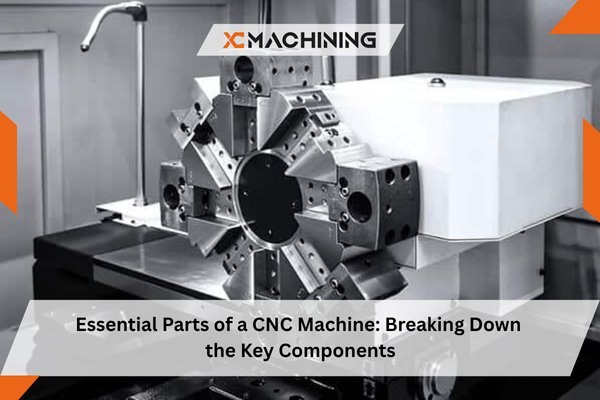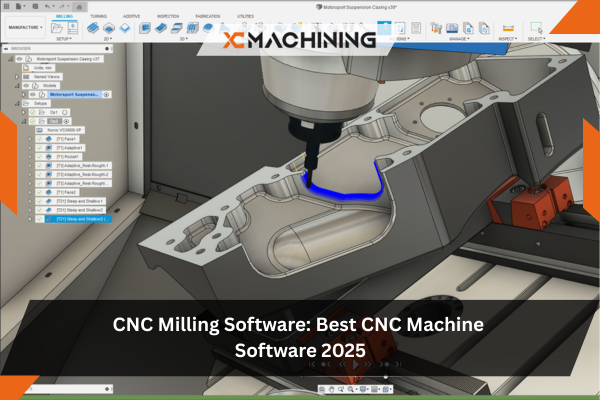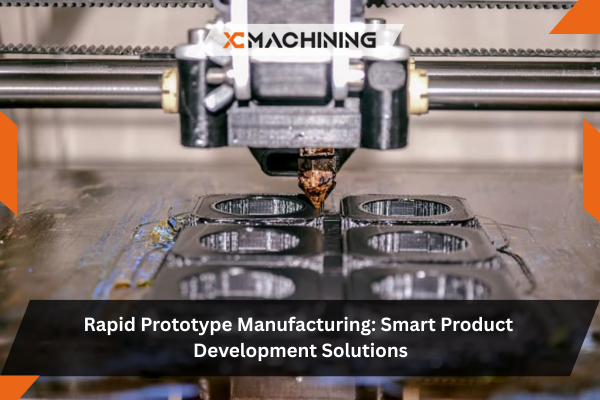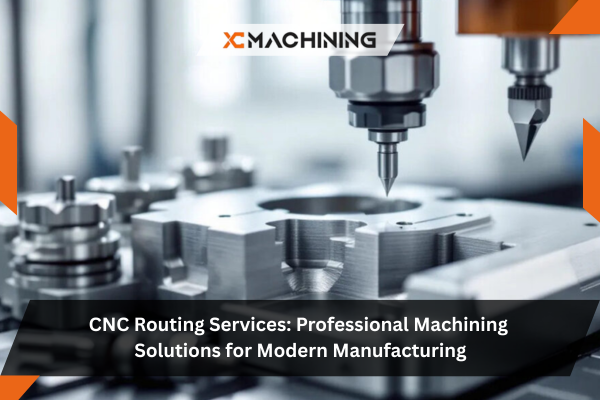CNC machines have come a long way in transforming how we shape and form materials. If you’re wondering how it all works or which CNC machine parts are the most important, you’re not alone. You might be trying to figure out why your machine isn’t running smoothly, or perhaps you’re just curious about how each piece plays a role in the final outcome. The biggest secret to a well-functioning CNC setup is understanding CNC machine parts like the control panel, spindle, and tool changers. When these components are in sync, you get high precision, efficient cuts, and fewer malfunctions. Keep your machine maintained, and you’ll enjoy smoother operations every time.
In this blog, we’ll look at every key part of a CNC machine. We’ll discuss the most critical CNC machine parts, how they work together, and why they matter to anyone aiming for top-notch results.
The Significance Of CNC Machine Parts
A CNC machine is more than just metal, wires, and a computer screen. It’s a combination of critical elements working in harmony. CNC machine parts like the frame, spindle, and control panel ensure accurate shaping of materials. Without these parts, efficient production would be almost impossible.
The Vital Role Of Precision
Precision is the heart of CNC machining. Even minor errors can affect product quality. That’s why CNC machining experts often emphasize routine checks on spindle alignment, tool calibration, and consistent software updates to keep accuracy in check from start to finish.
Maintaining Consistency And Speed
Aside from precision, speed matters, too. With a well-maintained CNC machine parts list, you can run multiple jobs faster and more accurately. When each part, from the spindle to the coolant system, is in top shape, you can produce uniform items swiftly, even in large quantities.
The Importance Of Reliability
Reliable machinery keeps production lines running smoothly. If any CNC machine metal parts fail, it halts the whole process. By regularly inspecting key components and addressing small issues early, you extend the machine’s life and avoid costly breakdowns that can delay important projects.
Understanding The CNC Control Panel
Every CNC machine relies on a control panel that serves as its “brain.” This panel interprets programming codes and controls the machine’s motions. A well-designed control panel helps you monitor spindle speed, cutting paths, and operational status. Through it, you can fine-tune motions for exact cuts, coordinate tool changes, and even track real-time production data. Without a responsive control panel, managing CNC machine parts effectively becomes a frustrating task.
Info: If you notice the panel acting up, it might be due to software glitches or wiring issues. Regular software updates often prevent headaches.
The Role Of Machine Bed And Frame
Think of the machine bed as the foundation of your house. It provides stability and balance to ensure everything stays in the right place. The frame also minimizes vibrations, which can impact accuracy. CNC machine parts mounted on a solid bed can cut consistently, whether you’re dealing with CNC machining wood parts or tough metals like steel and aluminum. Keep the bed free from debris and ensure all bolts are tight to avoid wobbling during production runs.
Quick Tip: Use a spirit level to check if your CNC bed is aligned properly. This simple step helps reduce uneven cuts.
Spindle And Its Function
The spindle is the spinning heart of any CNC machine. It firmly holds cutting tools and rotates them at high speed to shape your material. Whether you’re carving CNC machining wood parts or drilling into hardened steel, spindle performance is crucial. When it’s well-lubricated and properly cooled, you’ll notice cleaner edges and fewer errors. Spindles also come in various power ratings, so choose one that matches your workload for optimal results.
Suggestion: If you’re unsure which spindle motor suits your tasks, consult CNC machining experts for guidance.
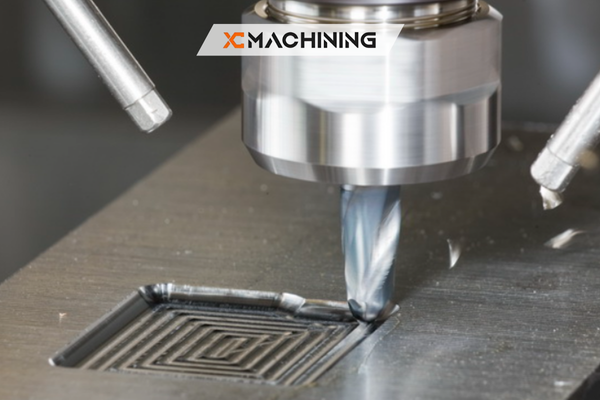
Tool Turret Or Tool Changer
Tool turrets or automatic tool changers allow the machine to switch between cutting heads quickly. This feature streamlines production because you don’t have to swap tools manually. A swift tool changer means faster cycle times. On the other hand, a sluggish or malfunctioning turret will create downtime. Regular cleaning and lubrication of this CNC machine parts list item helps you avoid production delays and maintain consistent quality across multiple tool changes.
Linear Guides And Bearings
Linear guides and bearings ensure smooth and precise motion of machine components. When you want to produce accurate cuts on CNC machine metal parts, you rely on these parts to minimize friction. A well-oiled set of bearings reduces energy loss and extends the life of the machine’s moving segments. By keeping linear guides clean and properly aligned, you reduce any jerky motion that could harm both your tools and your finished product.
Danger: Never ignore grinding noises in the rails. It’s often a sign of worn bearings that could lead to catastrophic failures.
Cutting Tools: The Sharp End Of CNC
Cutting tools are where the actual “cut” happens. From end mills to drills, each tool must be chosen based on material type—whether it’s CNC machining wood parts or high-strength alloys. Dull or inappropriate tools can break under stress or ruin your workpiece. This is why changing and sharpening these tools on schedule is vital. Below is a quick overview in a handy table:
| Cutting Tool Type | Best For | Maintenance Frequency |
|---|---|---|
| End Mills | General milling tasks | Every 2-3 uses |
| Drills | Holes in metals/wood | Weekly check |
| Lathes | Turning operations | After major runs |
| Reamers | Precision hole sizing | Monthly inspection |
| Burrs | Deburring edges | As needed |
A good set of cutting tools, combined with other well-maintained CNC machine parts, ensures you achieve fine surface finishes and accurate dimensions.
Coolant System Essentials
Overheating can cause serious damage to your tools, the workpiece, and even your machine. Coolant systems help stabilize temperatures by directing coolant fluid onto the cutting area. This fluid reduces friction and flushes away chips that could otherwise clog the workspace. Keep the coolant tank clean, and monitor fluid levels daily. A balanced coolant mix protects sensitive CNC machine metal parts from rust, too. Always follow the manufacturer’s guidelines for the correct coolant concentration to avoid corrosion or residue buildup.
Fact: Some machines use air blast systems instead of liquid coolants, especially for softer materials like plastic or wood.
Chip Management For Efficiency
Machining produces chips of all shapes and sizes. If these chips remain in the cutting area, they can scratch your workpiece or jam your machine. Investing in a proper chip auger or conveyor system is a game-changer. This device automatically removes chips, preventing them from interfering with other CNC machine parts. Sweeping away debris daily not only keeps your workspace clean but also enhances overall safety and efficiency.
Sensors And Feedback Mechanisms
Sensors track machine performance and detect errors before they escalate. For instance, some CNC setups use load sensors to gauge spindle pressure, while others have limit switches to keep tools from crashing into the material. These sensors deliver vital feedback that helps you make on-the-spot decisions. Without properly functioning sensors, you might operate in the dark, risking machine damage and flawed products. Properly calibrated feedback systems make you a more confident CNC operator and keep your CNC machine parts functioning smoothly.
Warnings: Overriding or ignoring sensor alarms can lead to severe damage. Always pause to investigate any alert signals.
Power Supply And Electrical Components
A stable power supply is crucial for smooth operations. Surges or voltage drops can fry sensitive electronic parts, including the control panel and servo motors. Ensure your CNC machine has a reliable, uninterruptible power supply (UPS) or voltage regulator to protect against unexpected fluctuations. Regularly inspect wiring and fuses to make certain that these essential CNC machine parts receive the proper voltage. Good electrical health goes a long way in preventing costly repairs and downtime.
Software And Programming Interface
No matter how robust your hardware is, you need solid software to run it efficiently. The programming interface allows you to design complex shapes, define tooling paths, and set cutting speeds. Modern CNC software often includes 3D simulations to help you visualize each step before the real cut. Frequent updates fix bugs and improve performance, making it easier to control your CNC machine parts precisely. By investing in the right software, you’ll simplify training and produce higher-quality outputs.
Quick Tip: Many CAD/CAM software providers offer free trials. Test a few options to find one that suits your skill level and project scope.
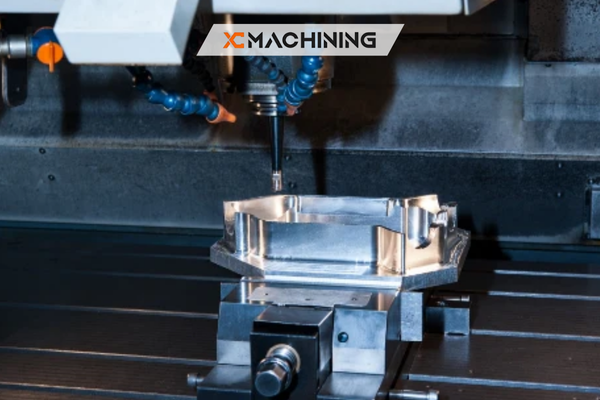
Conclusion
CNC machine parts form the backbone of your entire operation. From the bed and frame that keeps your setup stable to the spindle that cuts through wood and metal, each part is vital. By understanding and maintaining these components, you ensure accuracy, speed, and durability—exactly what any CNC enthusiast or professional hopes for.
In essence, your machine’s reliability and efficiency depend on how well you care for each piece. So don’t skip regular inspections, lubrication, and software updates. By doing so, you’ll keep your production line flowing smoothly, whether you’re dealing with CNC machine metal parts or performing CNC machining wood parts.
FAQs
Why is regular maintenance so important?
Maintenance ensures all CNC machine parts work properly, reducing the risk of breakdowns and costly repairs.
How do I decide which cutting tool to use?
Choose your tool based on the material you’re processing. Refer to manufacturer guidelines or consult CNC machining experts for specialized tasks.
Can one software handle both metal and wood machining?
Yes. Most CAD/CAM software accommodates various materials, including CNC machine metal parts and CNC machining wood parts, as long as you set up the correct toolpaths and parameters.

